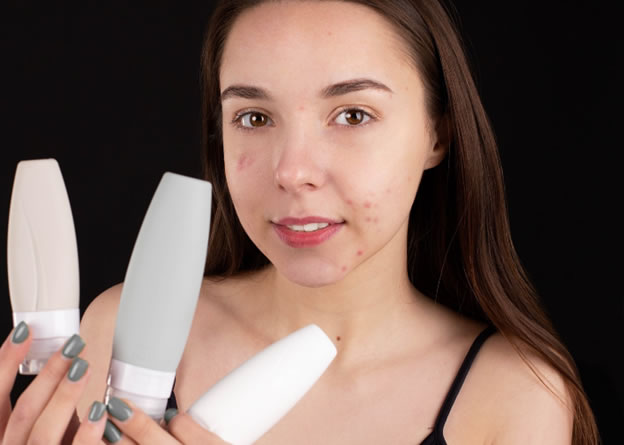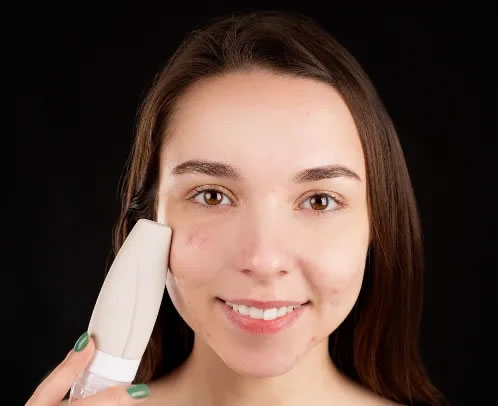
Fungal acne, also known as pityrosporum folliculitis, is a common skin condition that occurs when a type of yeast called Malassezia grows excessively in the hair follicles. Nizoral, an antifungal medication containing ketoconazole, is often recommended for fungal acne due to its effectiveness in combating Malassezia.
How to use Nizoral for fungal acne? To use Nizoral for fungal acne, choose the right product (shampoo or cream) based on the affected area. Cleanse the skin and apply Nizoral accordingly by massaging the shampoo into the skin and rinsing off after 3-5 minutes or by applying the cream directly to the acne lesions. Follow a regular treatment routine, moisturize, and protect the skin from the sun. Consult a dermatologist for personalized advice.
Understanding Fungal Acne

What Is Fungal Acne?
Fungal acne is often mistaken for traditional acne because they share similar symptoms, such as small, itchy bumps on the skin. However, the underlying cause of fungal acne is different. Unlike bacterial acne, fungal acne is triggered by an overgrowth of Malassezia yeast.
How Does Nizoral Work?
Nizoral contains ketoconazole, a powerful antifungal agent that effectively targets and eliminates Malassezia yeast. It works by disrupting the cell membranes of the fungus, preventing its growth and multiplication. By reducing the population of Malassezia, Nizoral helps alleviate the symptoms of fungal acne breakouts and promotes skin healing.
Using Nizoral for Fungal Acne

Step 1: Choose the Right Nizoral Product
Nizoral is available in various forms, including shampoos and creams. When using Nizoral for fungal acne, selecting the appropriate product is essential. Nizoral shampoo, which typically contains 1% or 2% ketoconazole, is commonly used for treating fungal acne on the face, chest & back and is also used as an anti-dandruff shampoo. Nizoral cream, with the same active ingredient, is better suited for localized fungal infections.
Step 2: Cleanse The Affected Area
Before applying Nizoral, it’s crucial to cleanse the affected area gently. Use a mild, non-comedogenic cleanser to remove dirt, oil, or makeup from the skin. Pat the skin dry with a clean towel, ensuring not to rub or irritate the acne-prone areas.
Step 3: Apply Nizoral
Using Nizoral Shampoo:
- 1. Wet the affected area with lukewarm water.
- 2. Apply a small amount of Nizoral shampoo to the affected area.
- 3. Gently massage the shampoo into the skin, ensuring it comes into contact with the fungal acne lesions.
- 4. Leave the shampoo on the skin for 3-5 minutes to allow the ketoconazole to penetrate the follicles.
- 5. Rinse thoroughly with water and pat the skin dry.
Using Nizoral Cream:
- 1. Take a pea-sized amount of Nizoral cream on your fingertips.
- 2. Apply the cream directly to the fungal acne lesions.
- 3. Gently massage the cream into the skin until it is fully absorbed.
- 4. Leave the cream on the skin for the recommended duration specified in the product instructions.
- 5. Avoid washing the treated area immediately after application to allow the ketoconazole to work effectively.
Step 4: Follow A Regular Treatment Routine
Consistency is critical when using Nizoral for fungal acne. It’s essential to follow a regular treatment routine to achieve optimal results.
Depending on the severity of your fungal acne, your dermatologist may recommend using Nizoral once or twice daily. Stick to the prescribed frequency and duration of treatment for the best outcomes.
Step 5: Moisturize and Protect
While highly effective in treating fungal acne, Nizoral can sometimes cause dryness or irritation. To counteract this, it’s essential to moisturize and protect your skin with proper fungal acne moisturizer and sunscreen.
After applying Nizoral, wait a few minutes to allow it to absorb fully. Then, apply a gentle, oil-free moisturizer to hydrate the skin and restore its natural moisture balance. Look for non-comedogenic products that won’t clog your pores.
Additionally, it’s crucial to protect your skin from the sun’s harmful UV rays. Apply a broad-spectrum sunscreen with an SPF of 30 or higher before going outside, even on cloudy days. This step is necessary because ketoconazole can increase the skin’s sensitivity to the sun.
We have also written a blog post about the complete treatment of fungal acne.
Tips for Using Nizoral for Fungal Acne
Tip #1: Consult a Dermatologist
Before incorporating Nizoral into your skincare routine, it’s advisable to consult a dermatologist. They can properly diagnose your condition and provide personalized treatment recommendations.
Tip #2: Patch Test
Performing a patch test is essential if you’re using Nizoral for the first time. Apply a small amount of the product on a small area of your skin and wait 24 hours to check for any adverse reactions. If you experience redness, itching, or irritation, discontinue use and consult your dermatologist.
Tip #3: Avoid Overuse
While Nizoral is effective against fungal acne, it’s important not to overuse it. Excessive use can lead to dryness and irritation. Follow the recommended frequency and duration of treatment prescribed by your dermatologist.
Tip #4: Be Patient
Treating fungal acne takes time. It may take several weeks or even months to see noticeable improvements. Stick to your treatment routine and be patient. Consistency is critical to achieving the best results.
Tip #5: Maintain Good Hygiene
To prevent the recurrence of fungal acne, maintain good hygiene practices. Avoid sharing personal items such as towels, razors, or clothing that may harbor the Malassezia yeast. Wash your clothes, towels, and bedding regularly in hot water to eliminate fungal spores.
Tip #6: Avoid Triggering Factors
Certain factors can exacerbate fungal acne. These include sweating, heat, and occlusive clothing. Avoid these triggers as much as possible and opt for loose, breathable clothing.
Tip #7: Follow a Balanced Skincare Routine
In addition to using Nizoral, it’s essential to follow a balanced skincare routine. Use gentle, non-comedogenic cleansers, moisturizers, and sunscreen. Avoid using harsh, comedogenic products that can further irritate the skin.
You should also read our previous blog post about Malezia skincare.
Final Thoughts
With its active ingredient, ketoconazole, Nizoral is an effective treatment for fungal acne. By targeting and eliminating the Malassezia yeast responsible for this condition, Nizoral helps alleviate symptoms and promote skin healing.
When using Nizoral, choosing the right product, cleaning the affected area, applying the medication correctly, following a regular treatment routine, and moisturizing and protecting the skin is crucial.
By incorporating these steps and following the tips, you can effectively use Nizoral to manage and treat fungal acne for more precise, healthier skin. Consult a dermatologist for personalized advice and guidance if you have any concerns or questions.
- “Nizoral Topical: Uses, Side Effects, Interactions, Pictures, Warnings and Dosing – WebMD.” Nizoral Topical: Uses, Side Effects, Interactions, Pictures, Warnings & Dosing – WebMD, www.webmd.com/drugs/2/drug-11220-1052/nizoral-topical/ketoconazole-cream-topical/details.
- “Lukewarm Water- Benefits, Uses, Precautions, Temperature.” Bodywise, 13 Sept. 2021, bebodywise.com/blog/lukewarm-water-tepid-water.
- Rubenstein, Richard M., and Sarah A. Malerich. “Malassezia (Pityrosporum) Folliculitis.” PubMed Central (PMC), www.ncbi.nlm.nih.gov/pmc/articles/PMC3970831.
More Content
- What is Fungal Acne
- Top-Rated Benzoyl Peroxide Face Wash for Acne
- The Best Moisturizers for Fungal Acne in 2023
- Fungal Acne Cleansers – An Updated List
- Moisturizer Alternatives to Avene Tolerance Extreme Emulsion
- Forehead Fungal Acne
- 18 SunScreens for Fungal Acne
- Fungal Acne-Safe Toners Your Skin Will Love
- The Importance Of Patch Testing Skincare Products
- Malezia Skincare: A Game-changer for Fungal Acne
